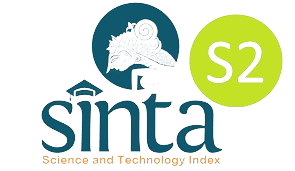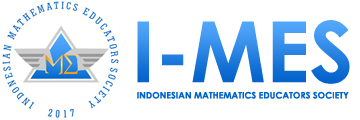Pengembangan Soal Matematika Model PISA Konten Bilangan untuk Mengetahui Kemampuan Literasi Matematika Siswa
DOI:
https://doi.org/10.29408/jel.v2i1.175Keywords:
development research, PISA, quantity content, mathematical literacyAbstract
The aims of the research are (1) to product content quantity PISA-like problems which validity and practicality, and (2) to know the potential effect of the content quantity mathematical PISA-like problems for mathematic literacy ability. The subjects of the research are student SMP AR-RAIHAN Bandar Lampung. The research method used is development research which consist of two stages, they are preliminary and prototyping. In the preliminary stage have been done analysis for research subject, curricula, analysis for content and manufacture of instruments. Meanwhile, in prototyping stage used formative evaluation which includes : self evaluation, one-to-one,expert review, small group, and field test. The data collection techniques used in the research were walk through (expert review stage) for knowing the validity of the content, construct, and language. Analysis one-to-one stage, small group stage, and quetionaire (small group stage) for knowing the practicality; test results, quetionaire, and interview (field test stage) for knowing potential effect. Based on the data analysis of research, it can be concluded that: 1) this research produced 4 items of content quantity PISA like mathematical problems which are valid and practice.The problems declared valid based on comments about content, construct, and language by experts and analysis in validity criteria; otherwise practical based on the student argumentation such as the problems can be understood by student and can be implementation properly; and 2) Of content quantity PISA like mathematical problems has potential effect on student. Based test result and questionnaire all based mathematical ability (KDM) be used student for answer questions.References
Ary, et al. (2010). Introduction to Research in Education. Wadsworth, USA: Cengage Learning.
Badan Standar Nasional Pendidikan. (2006). Panduan Pengembangan Silabus Kurikulum Tingkat Satuan Pendidikan (KTSP). Jakarta : CV. Laksana Mandiri
Kemdikbud. (2011). Survei International PISA. Diakses dari http://litbang.kemdikbud.go.id/index.php/survei-internasional-pisa pada 25 Oktober 2014
Kusumah, Y.S.(2012) Literasi Matematis. Disajikan pada Seminar Nasional Matematika, Universitas Bandar Lampung.
Lutfianto, M., Zulkardi, & Hartono, Y. (2013). Unfinished Student Answer in PISA Mathematics Contextual Problem. IndoMS-JME , 188-193.
Nieveen, N. & Plomp, T. (2007). Formative Evaluation in Educational Design Research (Eds). An Introduction to Educational Design Research. Enschede: SLO.
Novita, R., Zulkardi, & Hartono, Y. (2012). Exploring Primary Student’s Problem-Solving Ability by Doing Tasks Like PISA’s Question . IndoMS. J.M.E , 133-150.
OECD. (2003). Literacy Skill for the World of Tomorrow: further results from PISA 2000, Diakses dari http://www.oecd.org/edu/preschoolandschool/2960581.pdf pada 15 Oktober 2014
OECD. (2013). PISA 2012 Assessment and Analytical Framework: Mathematics, Reading, Science,Problem Solving and Financial Literacy. Paris: OECD Publishing.
Shiel,G., Perkins, R., Close, S., & Oldham, E.. (2007). PISA Mathematics: a teacher's guide, diakses dari http://www.sdpi.ie/inspectorate/insp_pisa_maths_teach_guide.pdf pada 15 Oktober 2014.
Stacey, K. (2010). Mathematical and Scientific Literacy Around The World. Journal of Science and Mathematics. Vol. 33 No. 1, 1-16.
Stacey, K. (2011). The PISA View of Mathematical Literacy in Indonesia. Journal on Mathematics Education (IndoMS-JME) Juli 2011, volume 2. 95 – 126.
Stacey, K. (2012). The International Assessment of Mathematical Literacy: PISA 2012 Framework and Items (Eds). Proceedings of The 12th International Congress on Mathematical Education, 756-772.
Tessmer, M. (1993). Planning and conducting formative evaluations: Improving the quality of education and training. London: Kogan Page.
Wu,, M.. (2010).. Usiing PISA and TIMSS Matthemattiics Assessmentts tto Identtiify the Rellattiive Sttrengtths of Sttudentts iin Westtern and Asiian.. Journall off Research iin Educattiion Sciiences,, Voll.. 1,, No.. 56,, 67-89..
Zulkardi.(2006). FormativeEvaluation:What, Why, When, and How, diakses dari http://www.reocities.com/zulkardi/books.html pada 20 Agustus 2013.
Downloads
Published
How to Cite
Issue
Section
License
Authors who publish with the Jurnal Elemen agree to the following terms:
- Authors retain copyright and grant the journal right of first publication with the work simultaneously licensed under Creative Commons Attribution-ShareAlike 4.0 International License (CC BY-SA 4.0).
- Authors are able to enter into separate, additional contractual arrangements for the distribution of the journal's published version of the work (e.g., post it to an institutional repository or publish it in a book), with an acknowledgment of its initial publication in this journal.
- Authors are permitted and encouraged to post their work online (e.g., in institutional repositories or on their website) prior to and during the submission process, as it can lead to productive exchanges, as well as earlier and greater citation of published work.
Jurnal Elemen is licensed under a Creative Commons Attribution-ShareAlike 4.0 International License





